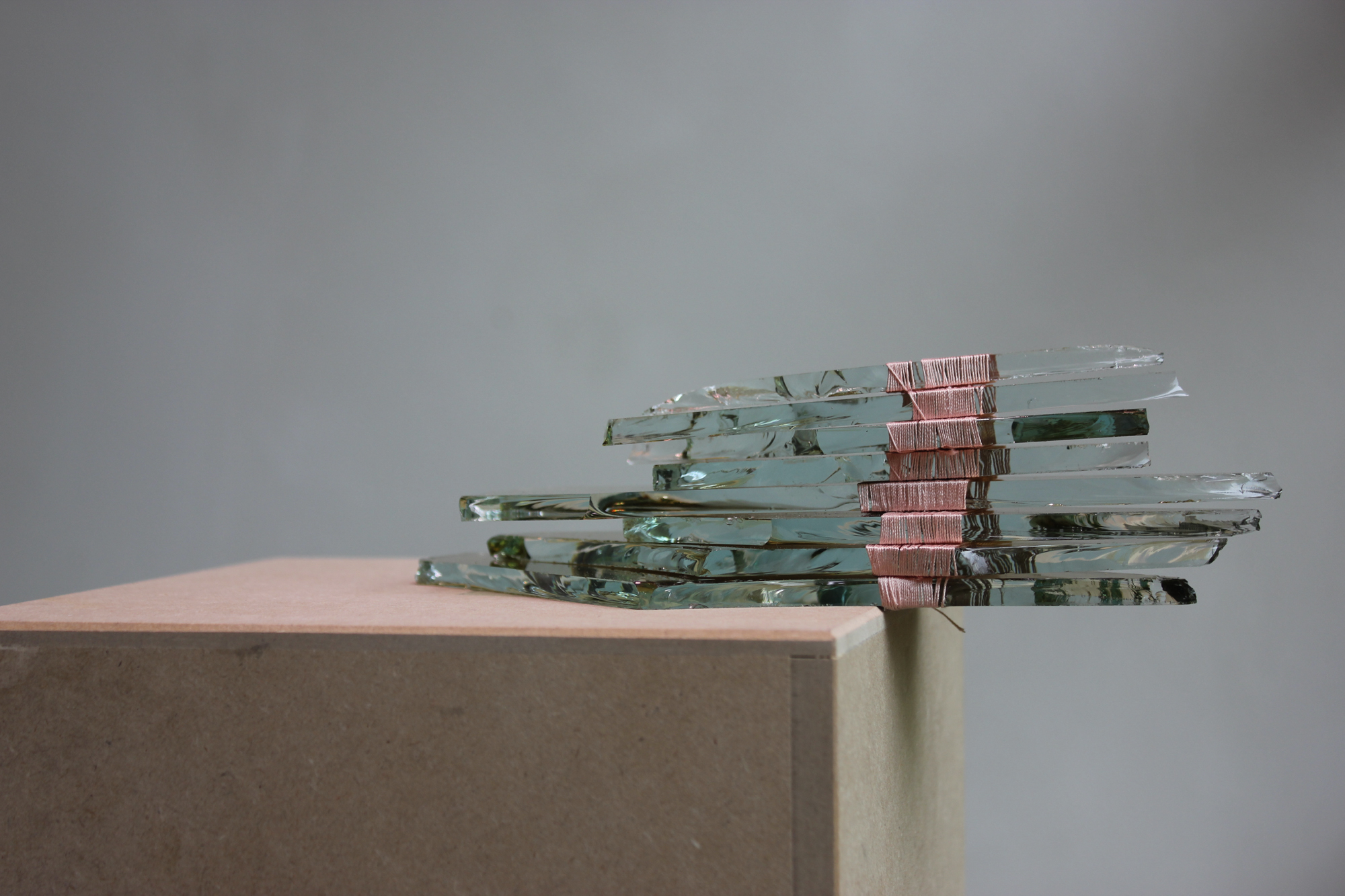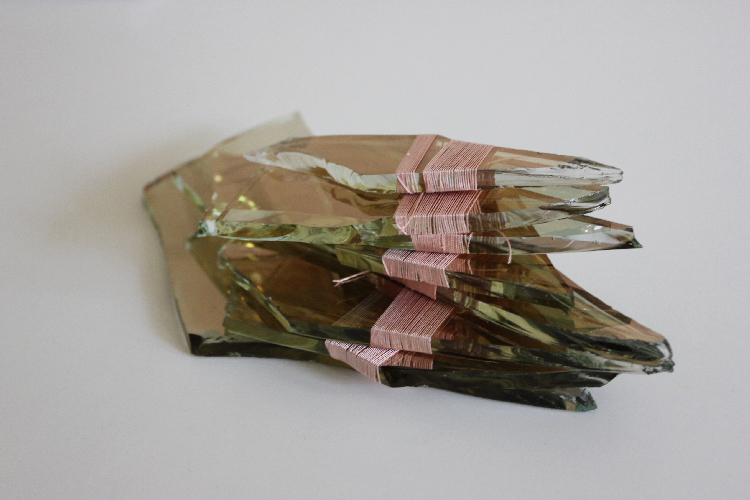
Fragments of the Palace
Berlin, 2013
Glass and silk thread Plattenpalast, Berlin, Germany Project: Kunst über und für den Plattenpalast
There are only memories and pictures left of the Palast der Republik building of Berlin, built in the times of the German Democratic Republic, which was demolished between 2005 and 2008. The deconstruction process was slow, spectacular, and full of controversy. In 1999 it was announced that the building was contaminated with asbestos, which was why a restoration process was carried out to get rid of this material that presents a health hazard. But despite the protests to preserve this building, which was considered by many to be an important symbol of East German architecture, it was decided that it should be demolished. The idea was to build the recently inaugurated Humboldt Forum in its place. The intention was to recover the old Royal Palace and give back some of the old former features to Berlin. The façade of this ghost building was covered with copper-colored mirrored windows. Some of them found their way into private hands; as in the case of the whs-architekten, who reused them for the construction of the building known as Plattenpalast.


This experimental building was built with the concrete modules from the Plattenbau and with 15 of the mirrored windows that once covered the façade of the Palast der Republik. Some of the windows broke in transit. I was working on a glass window in 2013 that had smashed in my studio, just when the architects invited me to contemplate, along with other artists, such an emblematic building as this. My tribute was the creation of a sculpture made with the fragments of these copper-colored windows.
It was an accumulation of stacked glass wrapped in a silk band, arranged eccentrically on a pedestal. This sculpture was inside the Plattenpalast, looking at the windows of the Palast der Republik. The installation works like a kind of Matryoshka memory, in which the fragment looks at the window and the window is a reminder of the building. A small mausoleum, an act of architectural memory of the city.






